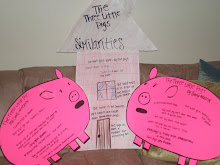Martin, Rafe
Shannon, David
The Putnam and Grosset Group, 1992
Fiction, Traditional Literature
All Ages
This story is about a poor man that lives with his three daughters off the shores of Lake Ontario. The two oldest daughters were very mean and cold hearted and took advantage of their father. They were also very mean to the youngest sister. They constantly ridiculed and were mean to her. The Rough Faced girl had scars and burns all over her face, hands and arms due to the fire. Her hair was burnt and very ragged. The sisters thought that this was funny and constantly put her down. One day the two oldest daughters went to their father and told him that they needed the most beautiful buckskin dresses and beaded moccasins. Their father gave it to them, and they left to go seek the invisible being. They wanted to marry him. When they arrived his sister knew that they were not special enough. She asked them what his bow was made of and they said the oak tree. That answer was wrong. She then asked them what his sled was made of. And they said the green willow branch. That was also wrong and the sisters were sent home. Later the Rough Faced Girl went to her father and asked to have a pretty dress. Her father had nothing because he had given everything to the sisters, but he had a few shells and worn out moccasins. She did not care and she gratefully took the items. People stared and laughed at her, but she did not care she kept on walking. Finally she arrived at the lake shore and the invisible beings sister was there. She asked him what his bow was made of, and she said the great curve of the rainbow. This was correct. Then she asked what his sled was made of and she said the milky way, this was also correct. The Invisible one came forth and thought she was so beautiful. He could see what was on the inside of her, and that is what counted to him. Then she took a bath in the lake and all of her scars washed away and she was as beautiful on the outside as she was on the inside. Her and the Invisible one married, and lived happily ever after.
I really enjoyed reading this book. I loved looking at the illustrations. It looks as though the illustrator used paints to create his images. The first image that was appealing to me was the first page. It really gave you an idea of the setting and where the story took place. It helped me as I was reading because I could visualize this place. I really liked how the illustrator blended the colors to create a mood. For example he blended the white areas in with the sky to create fog and I thought that that was really neat. The next image I really enjoyed looking at was the one of the wigwam. I liked this image because you could see all of the symbols that were important to this Native American culture. The sun, deer, bears, eagle and the stars must have been really important to be painted on this huge wigwam. The next image I really liked was the one with all three sisters by the fire. The illustrator used dark colors to create a mood and also used intense lines to create shading. I really enjoyed looking at their costumes as well. You could see all of their beautiful jewelry and colors that they wore. Usually I enjoy looking at the pictures more than reading the text but for this book I feel like it was pretty balanced. The author and illustrator made a really good team. Also throughout the story the author used similes and compared things to objects that I am familiar with. Like when he talked about her moccasins and how they were too big and she walked like a duck. These helped me get a better image in my head as well.
I would use this book in my classroom. I would do something like we did with the Venn diagrams or the I poems. I think that this would be great to introduce culture to children and it also would be good to use the Cinderella stories because most children are familiar with the story of Cinderella. The book also has a really good moral to the end and that would be important to teach children as well.
Thursday, April 3, 2008
Subscribe to:
Post Comments (Atom)

By Barry Moser

By David Wiesner

The Three Little Pigs














No comments:
Post a Comment